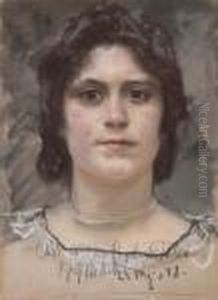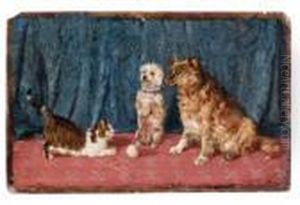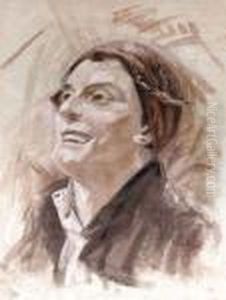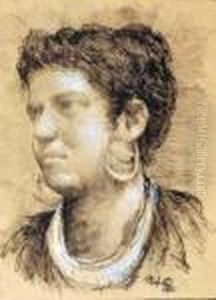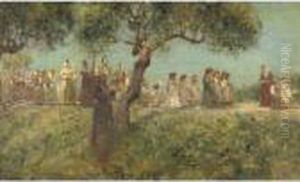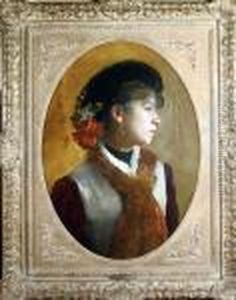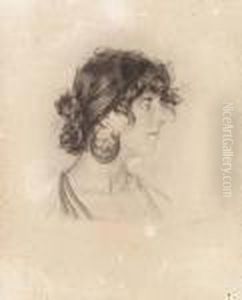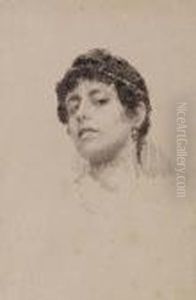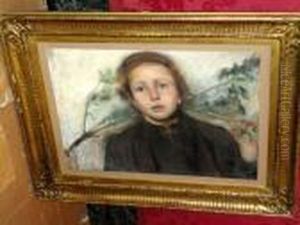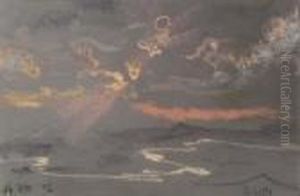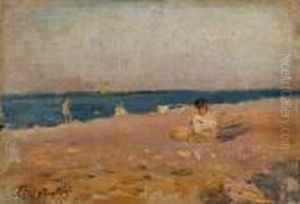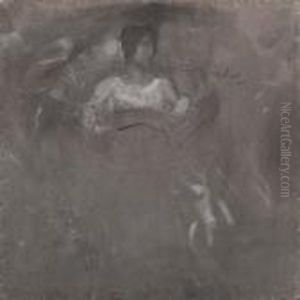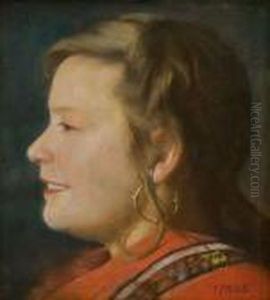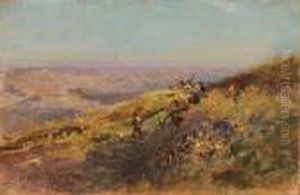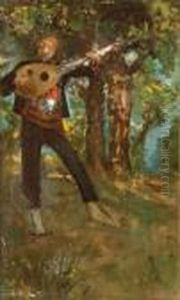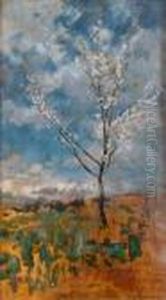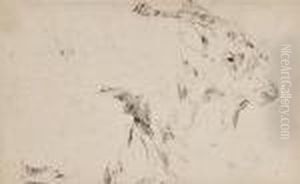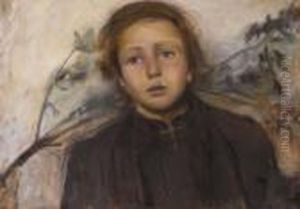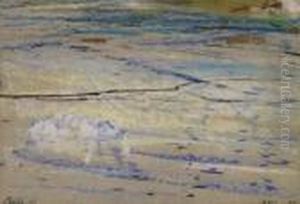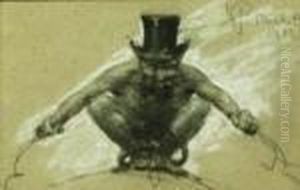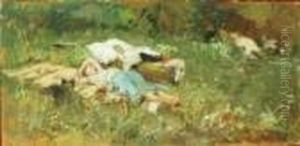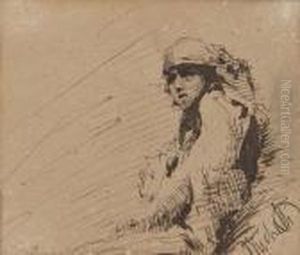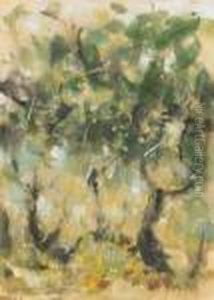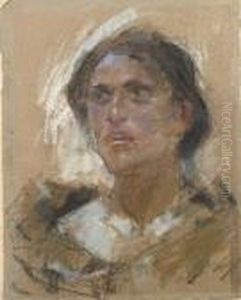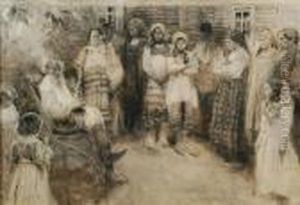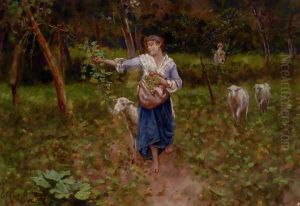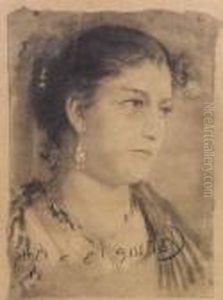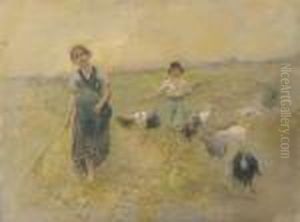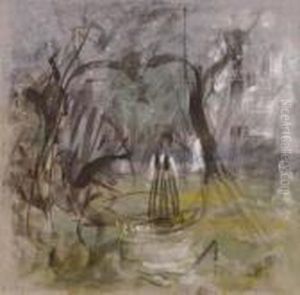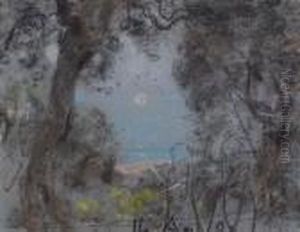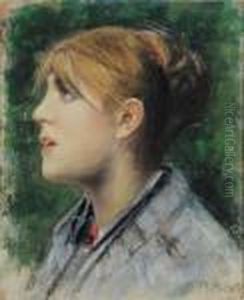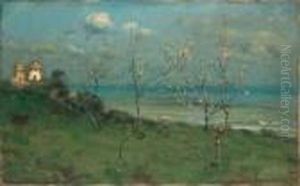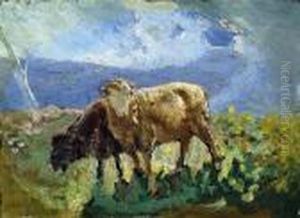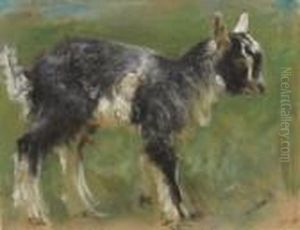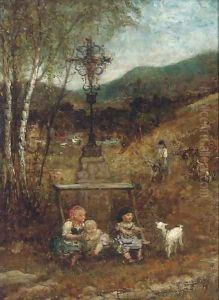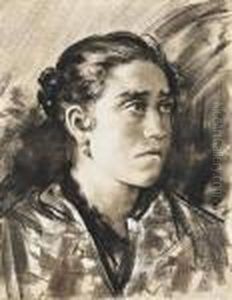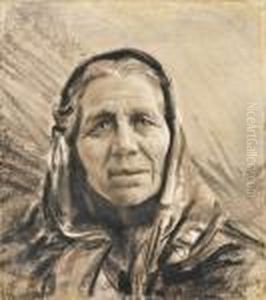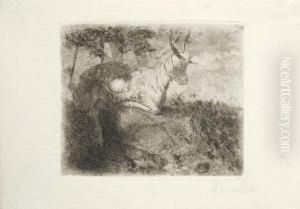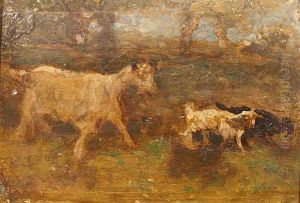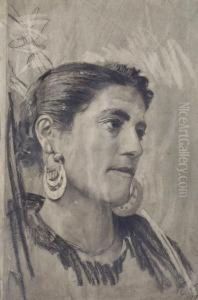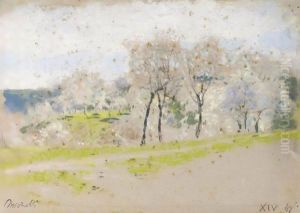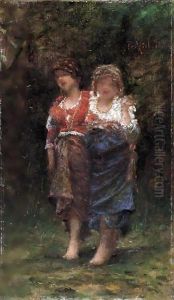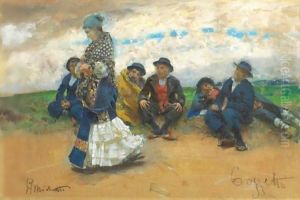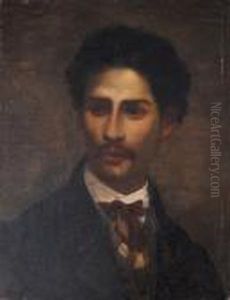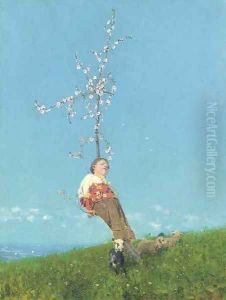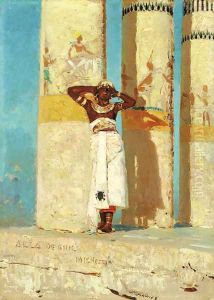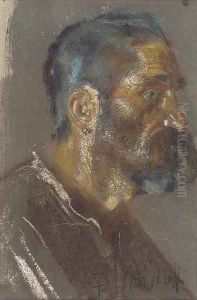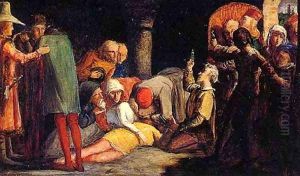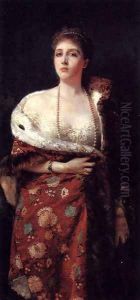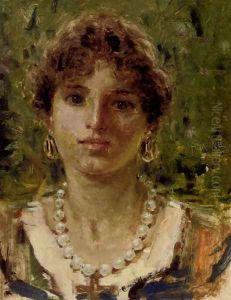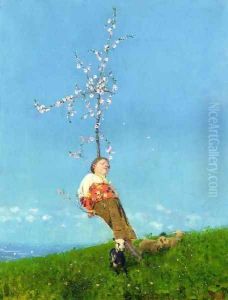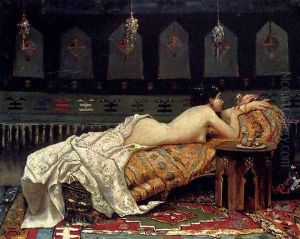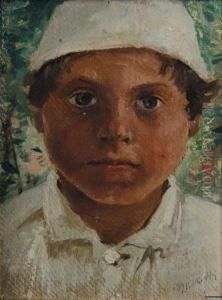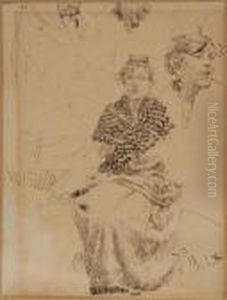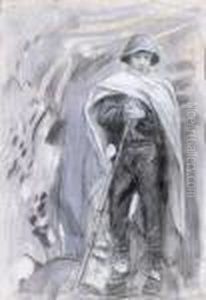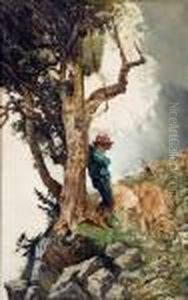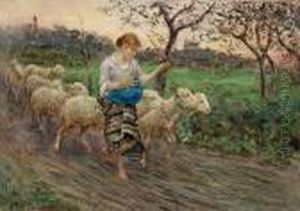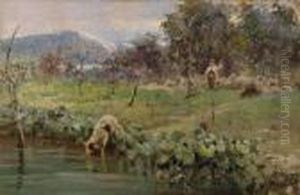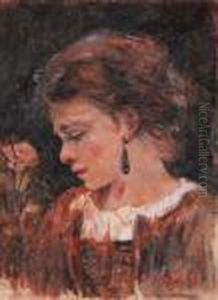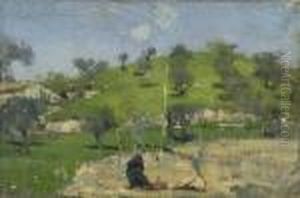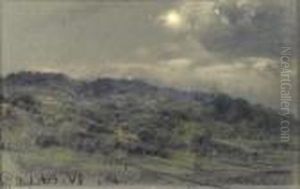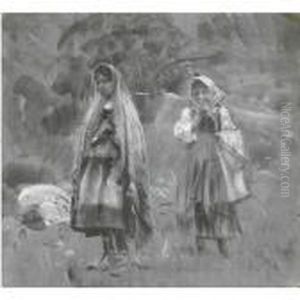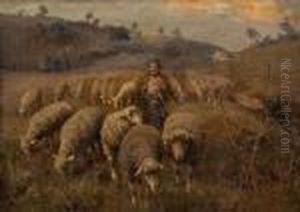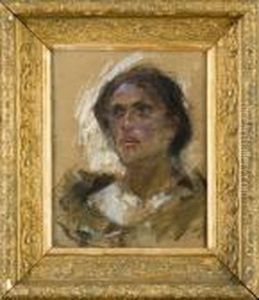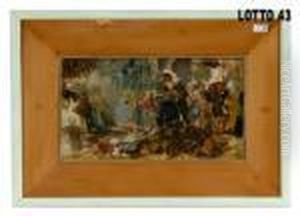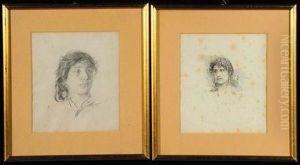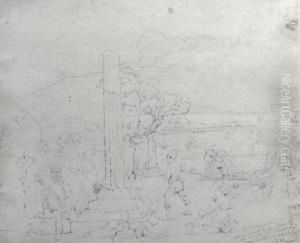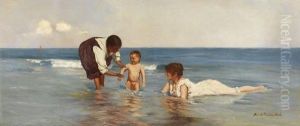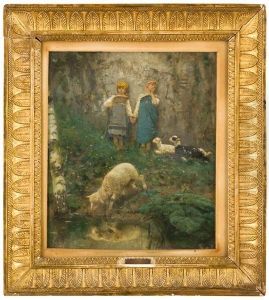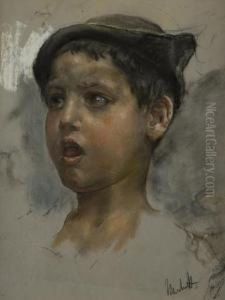Francesco Paolo Michetti Paintings
Francesco Paolo Michetti was an Italian painter known for his realistic yet poetic depictions of rural Italian life, particularly that of his native region of Abruzzo. Born on August 4, 1851, in the small town of Tocco da Casauria, Michetti developed an early interest in art and was enrolled in the School of Nude drawing at the Naples Academy by the age of 16. His talent was evident, and he soon won a scholarship to study in Rome.
In Rome, Michetti was influenced by the work of the Italian Macchiaioli, a group of artists known for their bold, impressionistic use of color and light. He also absorbed the academic teachings of the time, which favored historical and classical subjects. However, Michetti quickly found his passion in capturing the everyday lives of people, especially peasant life in the Abruzzi region.
Michetti's work was characterized by its vibrant light and color, and his subjects often included scenes of pastoral life, religious processions, and local folklore. One of his most famous works is 'La Figlia di Iorio' (1906), which depicts a dramatic moment from an Abruzzese folk tale. This painting showcased Michetti’s ability to blend realism with a certain lyrical and emotional quality, which became a hallmark of his style.
Michetti was not only a painter but also a photographer, and he used photography to capture scenes which he would later translate into paintings. His house in Francavilla al Mare became a hub for intellectuals, artists, and writers, who were drawn to Michetti's charismatic personality and the vibrant cultural atmosphere he fostered.
Throughout his career, Michetti exhibited his work widely, including at the Paris Salon and the Venice Biennale, and he received numerous awards and honors. His work resonated with both critics and the public, and he was considered one of the leading Italian artists of his time.
Francesco Paolo Michetti passed away on March 5, 1929, in Francavilla al Mare. His legacy continues to influence Italian art, and today his works are held in many major museums in Italy and around the world. Michetti’s house in Francavilla is now a museum dedicated to his life and work, preserving the memory of a man who captured the spirit of Abruzzo through his art.
